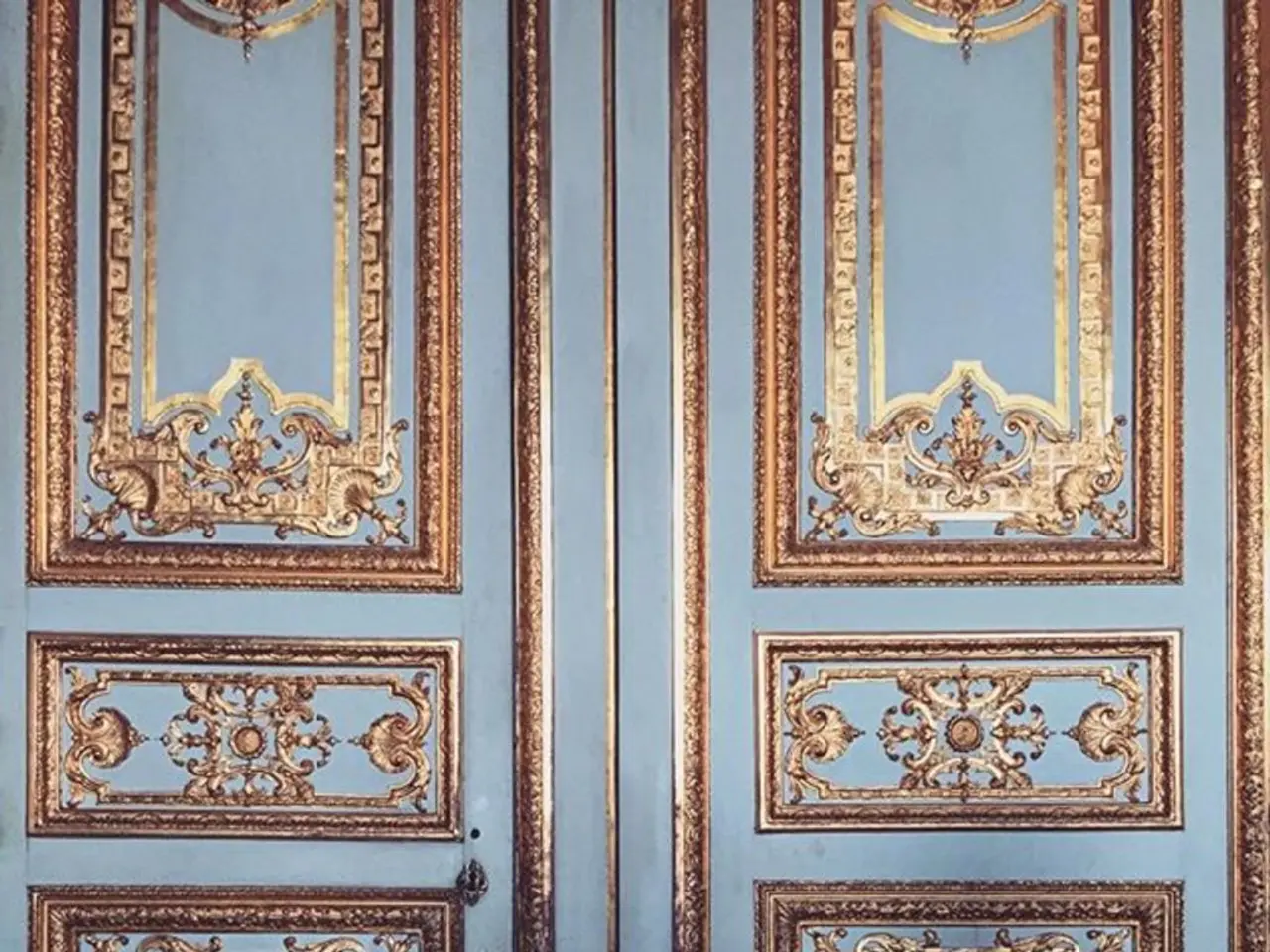Perforated Surfaces Gaining Popularity in Interior Design: Insight into Why Perforated Panels and Holed Finishes are Current Trends
Perforated surfaces, with their graphic, rhythmic, and unexpected appeal, are making a notable comeback in the world of interior design. This playful tool, which balances function and ornament, offers a versatile solution for concealing ventilation, filtering light, or dividing space, while adding a sculptural quality to interiors.
The use of perforated details in architecture and design is not a new concept. Historically, perforations have appeared in architectural elements such as mansard roofs, where dormer windows puncture the roof surface to allow light and additional space. This principle dates back centuries, with designs from the 16th century and popularization in later periods like the French Baroque.
In the 1980s, perforated surfaces became popular as a playful geometric design tool, adding rhythm and visual interest to interiors. Today, their resurgence is tied to both their aesthetic appeal and multifunctionality. Modern designers use perforated panels not only for decoration but also for practical purposes.
Concealing functional elements like air conditioning units while allowing airflow and maintaining a sleek and intentional look is one such purpose. Allowing natural light to filter through while preserving privacy, as seen in perforated tiles amplifying and refracting light in luxury bathrooms, is another. Enhancing ventilation, diffusing light, and adding texture and depth to surfaces are additional benefits.
Perforated surfaces fit best where both design and function are key. In living spaces, they can hide unsightly equipment like AC units or ventilation systems, making these elements part of the architectural statement rather than visual clutter. In bathrooms, perforated tiles or panels allow natural light to enter without compromising privacy, creating an elegant and modern atmosphere.
Feature walls and partitions can serve as decorative partitions that maintain openness and light flow while defining spaces. Furniture surfaces, although less highlighted, offer opportunities for innovative surface treatments that could include perforations for customizable and magnetic designs.
Exterior facades or semi-exterior spaces can also benefit from perforated metal facades, providing shading, ventilation, and cooling effects. Contemporary projects like the Vietnamese villa by Studio KHOA VU, which uses perforated walls to breathe and filter light, are prime examples.
Greg Natale, an interior designer, often designs custom features that conceal air conditioning units behind perforated surfaces. Yasmine Ghoniem, founder and principal at Sydney-based YSG Studio, designed a custom-made door leading into a home with perforations backed with bronze mirrors.
The current interior design trend is the use of purposeful holes, also known as perforated surfaces, in various spaces. Design studios like Pirajean Lees incorporate perforated fabrics in their designs, adding movement and playfulness, yet maintaining a design-forward and architectural aesthetic.
The perforated fabric in Pirajean Lees' room is made from 100% virgin wool and features a laser-cut, jazz-inspired pattern that evokes abstract musical notes and musicians' hands. This fabric adds a soft focal point that frames the Library, with light spilling through the pin-pricks sparkling like stars in a night sky.
At the WOW!house showcase this year, design studio Pirajean Lees incorporated a draped, perforated fabric in their room. The perforated detail in Greg Natale's design allows for airflow from the AC unit, enhancing the space with a distinctive design detail.
Perforated surfaces are moving away from 'industrial chic' connotations, and are now associated with a considered, clever, and undeniably cool design element. Their design flexibility allows them to be successfully integrated in various home areas, enriching both aesthetics and comfort. The renewed interest in perforation ties back to the revival of 70s and 80s design language, particularly in postmodernism.
In conclusion, perforated surfaces offer a unique blend of aesthetic appeal and functional benefits, making them an exciting addition to the modern interior design landscape.
- Mirrors, backed with bronze, adorn a custom-made door leading into a home, adding an intriguing element to the design by Yasmine Ghoniem.
- In an innovative twist, Pirajean Lees incorporates perforated fabrics made from 100% virgin wool in their designs, creating a soft, focal point that resembles abstract musical notes.
- Tiles with perforations in luxury bathrooms, such as those amplifying and refracting light, are becoming popular as they deliver aesthetic appeal while enhancing lighting and preserving privacy.
- Designers like Greg Natale are utilizing perforated surfaces to conceal functional elements, such as air conditioning units, making these elements visually appealing rather than clutter.
- The trend of using perforated surfaces can be observed in various spaces, adding texture, depth, and visual interest to interiors, while offering multifunctionality and flexibility in design.
- In addition to enhancing ventilation and lighting, perforated metal facades on exterior facades or semi-exterior spaces can provide shading and cooling effects, as demonstrated in contemporary projects like the Vietnamese villa by Studio KHOA VU.



